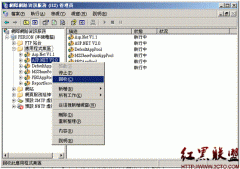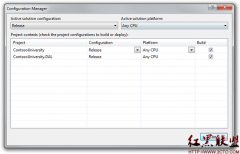ASP.NET缓存(2)
这个时候我们可以在VarByParam 属性中指定重要的查询字符串变量的名字,如下:
<%@OutputCacheDuration="60"VaryByParam="id;langid"%> 这样,ASP.NET可以根据id” or “langid”来缓存不同的缓存版本。
自定义缓存(Custom Caching)
你也可以创建自定义的程序来缓存页面。ASP.NET提供了一种很便捷的方式来创建自定义缓存,使用VarByCustom属性指定自定义缓存类型的名字。
你还要创建为缓存生成自定义字符串的方法,如下:
public override stringGetVaryByCustomString(HttpContext context, stringcustom)
{
if(custom == "browser")
{
returncontext.Request.Browser.Browser +
context.Request.Browser.MajorVersion;
}
else
{
return base.GetVaryByCustomString(context, custom);
}
} 这个方法必须写在global.asax文件中。ASP.NET使用该方法返回的字符串来实现缓存,如果这个方法在不同的请求中返回相同的字符串,ASP.NET就会使用缓存的页面,否则就会生成新的缓存版本。
上面的例子中GetVaryByCustomString()方法根据浏览器的名字创建缓存字符串,ASP.NET会根据不同的浏览器请求创建不同版本的缓存。
控件缓存(Control Cache )
上面的缓存技术可以让你很容易的缓存整个页面,如果要缓存指定控件的内容,可以通过指定VaryByControl 属性来完成。
<%@OutputCacheDuration="20"VaryByControl="MyControl_1"%>上面代码ASP.NET将会缓存MyControl_1控件20分钟。如果要根据一些属性值来缓存控件只需要将OutPutCache指令加入*.ascx页面。
<%@Control Language="C#"AutoEventWireup="true"CodeFile="MyControl.ascx.cs"Inherits="Controls_MyControl"%>
<%@OutputCacheDuration="20"VaryByControl="EmployeeID"%>VaryByControl=”EmployeeID”告诉ASP.NET根据控件中声明的EmployeeID属性来创建不同版本的缓存。
在 .ascx.cs 文件加入EmplyeeID属性为ASP.NET 缓存使用。
在页面中增加控件并且设置 EmployeeID.
private int_employeeID;
public intEmployeeID
{
get{ return_employeeID; }
set{ _employeeID = value; }
}
protected voidPage_Load(objectsender, EventArgs e)
{
lblDate.Text = DateTime.Now.ToShortDateString();
lblTime.Text = DateTime.Now.ToLongTimeString();
lblEmployeeID.Text = EmployeeID.ToString();
}缓存配置文件(Cache Profile )
web.config可以配置缓存相关的设置,
<system.web>
<caching>
<outputCacheSettings>
<outputCacheProfiles>
<addname="ProductItemCacheProfile" duration="60"/>
</outputCacheProfiles>
</outputCacheSettings>
相关新闻>>
- 发表评论
-
- 最新评论 进入详细评论页>>



